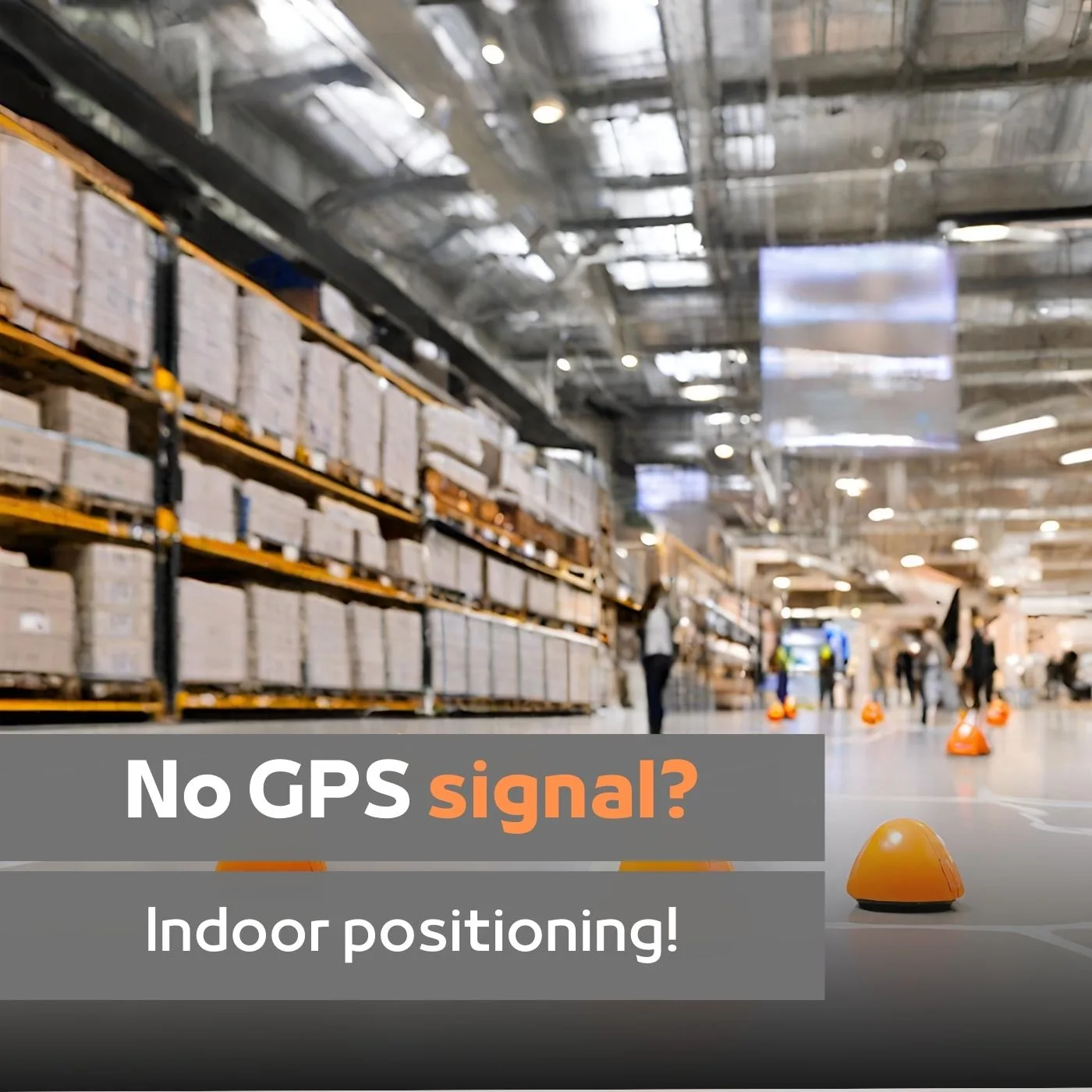Indoor positioning has become a focal point across various industries, from sports to healthcare and manufacturing. More and more businesses are seeking positioning systems to optimize core operations and maximize performance. Consequently, new indoor positioning technologies are being developed to reduce costs and increase accuracy.
Understanding Indoor Positioning
While most of us are familiar with outdoor positioning technologies like GPS or GNSS, there’s a growing demand for tracking systems indoors that can provide precise locations for objects and people. However, satellite radio signals struggle to penetrate walls and other obstacles.
To meet this growing demand and its specific requirements, manufacturers of Industrial Internet of Things (IIoT) are developing more efficient Indoor Positioning Systems (IPS). Most of these applications rely on existing technology, but by adding innovative software layers, indoor positioning systems are becoming increasingly accurate.
Types of Indoor Positioning Systems
Indoor Positioning Systems (IPS) encompass a network of devices used to track people or objects in locations where GPS and other satellite-based technologies lack precision or fail entirely. These systems can utilize various positioning technologies, differing in accuracy, cost, scalability, reliability, and security.
To determine which solution best suits your specific needs, consider the following criteria:
- Precision and accuracy
- Coverage and resolution
- Position update frequency
- Infrastructure cost
- Suitability for the intended environment
To better understand the difference between these indoor positioning technologies, let’s first explore the various options.
Fundamental Principles of IPS
Algorithms extrapolate location-related data from radio signals circulating between reference nodes (fixed points) used as reference points for mobile nodes to determine the exact location of an object or person. However, not all systems operate on the same physical principles and can be categorized into five main types:
- Time of Arrival (TOA)
- Angle of Arrival (AOA)
- Arrival Time Delay (TDOA)
- Received Signal Strength Indicator (RSSI)
- Hybrid Systems (combining different physical principle-related measurements)

![]()
Different Techniques for IPS
Now that you’re familiar with the various criteria and positioning principles, let’s delve deeper into different indoor positioning technologies.
1. Active RFID
Active RFID technology, while originally not developed for positioning applications, offers area-based positioning technology by mapping intersections. Active RFID systems consist of active transponders (tags) and one or more RFID readers. Each time a person or object equipped with a tag enters the reader’s range, the system reads the corresponding tag using RFID’s low-frequency signals.
Summary of Active RFID
- Advantages:
- Enhanced accuracy due to UHF technology
- Reliable even in obstructed environments
- Easy setup and deployment
- Energy-efficient with long tag lifespan
- Simple installation without significant infrastructure requirements
- Disadvantages:
- Limited range (5-15 meters)
- Requires fixed infrastructure for reader and antennas
- Network performance depends on the environment
2. RSSI and Mesh Network Positioning
Mesh networks connect numerous interconnected objects without a central controlling unit. Wirepas, for example, has developed innovative programs optimizing network management for connected objects, creating smarter, decentralized networks optimized for performance and adaptability to environmental and network variations.
Summary of RSSI and Mesh Network Positioning
- Advantages:
- Connects hundreds of devices without interference
- Scalable network size
- Unlimited total network coverage
- Encrypted messages for data security
- Customer owns and can access information anytime
- Easy installation with low infrastructure costs
- Disadvantages:
- Limited battery life of anchors, especially with regular position updates
![]()
3. Ultra Wideband (UWB)
Ultra Wideband technology enables extremely accurate positioning of various objects and individuals. UWB technology boasts high bandwidth and short-range data transmission capabilities, reaching speeds of up to 100 Mbit/s. It offers sub-meter accuracy, making it one of the most precise positioning applications available.
Summary of Ultra Wideband
- Advantages:
- Sub-meter positioning accuracy
- No need for line of sight
- Low susceptibility to other communication devices or external interferences
- Disadvantages:
- High acquisition costs
- Significant installation costs
4. Angle of Arrival (AOA)
AOA calculates angles formed between an antenna and a beacon, providing real-time positioning efficiently. It offers improved accuracy compared to signal strength-based techniques like RSSI.
Summary of AOA
- Advantages:
- Positioning accuracy under 50 cm
- Real-time updates
- Long battery life
- Scalable and easily integrable with up to hundreds of thousands of tags
- Disadvantages:
- Significant fixed hardware costs
- High installation costs
Conclusion
Indoor positioning presents various challenges, but it offers promising opportunities across industries like manufacturing, healthcare, and sports. As part of an ongoing development, performance is optimized, and different positioning technologies continue to evolve to offer better precision and flexibility.
When considering technology options, choose the right one based on your specific needs and requirements. Take all relevant parameters into account, including acquisition and installation costs, along with expected positioning accuracy. For instance, tracking large equipment may not necessarily require precise 30 cm positioning. In such cases, we recommend opting for a plug-and-play solution, which is easy to install and more cost-effective than solutions requiring significant infrastructure investments.
Comparison
| Technology | Active RFID (RSSI LF) | Bluetooth Mesh (RSSI) | Ultra Wideband (TDOA) | AOA/BLE |
|---|---|---|---|---|
| Accuracy | 1m | 5-10m | 0.1-1m | 0.1-1m |
| Update Frequency | <1 sec | >1 min | <1 sec | <1 sec |
| Tag Battery Consumption | Low | Medium | High | Low |
| Installation Cost | Medium | Low | High | Medium/High* |
| Acquisition Cost | Medium | Low | High | Medium/High* |
(*depends on desired accuracy)
This comprehensive guide provides insights into various indoor positioning technologies, helping you make informed decisions for your specific applications. Choose wisely, considering your unique needs and the evolving landscape of indoor positioning solutions.

